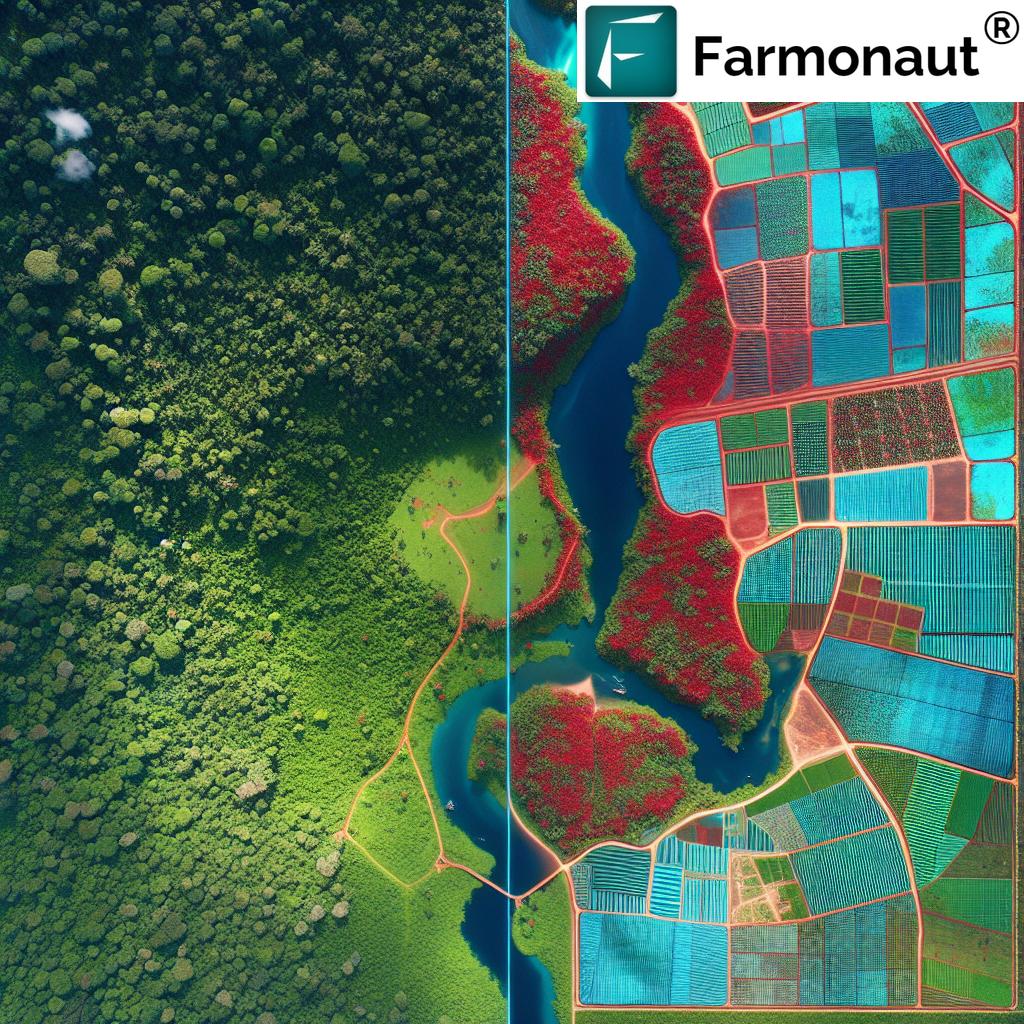ASEAN 2024: Top Health Challenges Facing Southeast Asia
“Over 60% of Southeast Asians face increased health risks due to climate change and widening socio-economic disparities in 2024.”
ASEAN Health Landscape (2024): A Serious Wake-Up Call
When we examine the health panorama of ASEAN in 2024, a pressing reality emerges. The brilliance of rapid urbanization and socio-economic growth across Southeast Asian nations is darkened by persistent health threats, underwhelming progress toward global targets, and widening equity gaps. The ASEAN countries health challenges are interconnected: infectious and non-communicable diseases, poverty, environmental stressors, fragmented health systems, and the accelerating impacts of climate change. Despite steadfast ambition, countries such as the Philippines and Cambodia find themselves falling short of key health benchmarks, further complicated by climate and socio-economic disparities.
The Association of Southeast Asian Nations (ASEAN)—comprising Indonesia, Thailand, Malaysia, Singapore, Philippines, Vietnam, Cambodia, Laos, Brunei, and Myanmar—stands at a crossroads. Our shared home to over 667 million people, Southeast Asia is a microcosm of global health developments, challenges, and opportunities. As we move toward the 2030 Sustainable Development Goals (SDGs), it is crucial to dissect the barriers, celebrate successes, and strategize on sweeping, equity-driven action for robust population health.
ASEAN Countries Health Challenges: Analysing the Big Picture
Health systems in our region are tested in unprecedented ways. According to a comprehensive study published in PLOS Medicine, all ten ASEAN countries are poised to miss global health goals around infectious disease control by 2030. Areas of concern include rising new HIV/AIDS cases, persistent tuberculosis, stubborn hepatitis B rates, and a complex landscape of neglected tropical diseases. The situation is further aggravated in countries such as the Philippines—where control of TB, HIV, and hepatitis B is unexpectedly weak—and in Cambodia and Laos, where health infrastructure is thin and workforce shortages are common.
We see a remarkable variance: Singapore emerges as the sole ASEAN nation on track for the UN target in battling non-communicable diseases and road injuries, while countries like the Philippines and Indonesia show regression or slow progress in such domains. Meanwhile, harmful habits such as hazardous alcohol consumption and high smoking rates threaten gains in Vietnam, Cambodia, and Laos, fueling waves of chronic illness across Southeast Asia.
For governments, agribusinesses, and farmers aiming to approach sustainability, Farmonaut offers carbon footprinting solutions to monitor, manage, and lower emissions. This is critical for advancing environmental health and aligning with climate adaptation strategies across countries burdened by high exposure to climate volatility.
“The Philippines and Cambodia lag behind ASEAN health targets, with progress slowed by environmental and economic challenges.”
Southeast Asia Infectious Diseases: Progress, Stagnation, and Gaps
Southeast Asia infectious diseases remain a persistent concern. Despite significant investments and international attention over the past three decades, Southeast Asian nations are still grappling with both old and new threats to public health. While malaria incidence has declined and a few countries are on track to eliminate it by 2030, the region has seen a steady rise in new HIV/AIDS cases since 2010 and only modest progress in tackling tuberculosis and hepatitis B.
- Malaria: While Thailand and Malaysia approach pre-elimination status, malaria persists in border and rural areas of Cambodia, Vietnam, and Laos.
- HIV/AIDS: The last decade has witnessed increasing new cases, notably in the Philippines and certain Indonesian provinces. Effective targeting and health coverage remain insufficient.
- Tuberculosis (TB): Indonesia bears one of the world’s highest TB burdens, and the Philippines faces rising prevalence and slower-than-expected reduction rates.
- Hepatitis B: Persistently high in rural populations and among marginalized groups, notably in Laos, Cambodia, and Vietnam.
We must emphasize: “tackling communicable diseases in ASEAN” is a multi-layered challenge, deeply embedded in rural poverty, limited education, and inadequate health infrastructure. Delayed diagnoses and poor health literacy often compound these burdens.
For communities involved in agricultural production, product traceability is essential for safe food systems and transparent supply chains. Explore Farmonaut’s blockchain-based traceability—supporting health by ensuring food and input origins can be verified, a crucial element in fighting zoonotic disease outbreaks and maintaining export standards.
Non-Communicable Diseases in Singapore, Indonesia, and the ASEAN Bloc
Non-communicable diseases (NCDs)—such as cancer, diabetes, cardiovascular diseases, and chronic respiratory diseases—represent a growing threat across Southeast Asia. The burden of NCDs is rising, driven by aging populations, increased life expectancy, unhealthy diets, urban pollution, and surging rates of smoking and alcohol consumption.
Interestingly, Singapore stands out as the only ASEAN nation projected to achieve the United Nations target for reducing premature deaths from NCDs. This is thanks to comprehensive health coverage, effective risk-factor control, and robust preventative health systems.
- Singapore – Non-Communicable Diseases: A strong national push for healthy lifestyles, tobacco control, early screening, and excellent access to healthcare services make Singapore a model for other Southeast Asian nations striving to reduce NCD mortality.
- Indonesia and ASEAN Health Targets: Indonesia, the Philippines, and Malaysia have made progress in some areas but remain off-track in NCD reduction, neuro-vascular care, and trauma from road injuries. Escalating obesity prevalence and persistent urban air pollution threaten to reverse gains.
- Vietnam, Cambodia, and Laos: Heavy alcohol use (up to 90% increase in recent years), combined with high smoking rates, positions these countries at extreme risk of NCD-related illness and mortality.
As NCDs place an ever-greater fiscal and social burden, our focus must pivot toward high-impact prevention strategies, including improved nutrition, reduced environmental toxins, and scalable, data-driven interventions—especially in fast-urbanizing and high-risk regions.
Healthcare Progress in Cambodia and Laos: Barriers and Insights
Delving deeper into the healthcare progress in Cambodia and Laos, we find persistent and complex obstacles. Both countries have made modest advances in reducing child stunting and improving basic nutrition but fall behind in nearly all domains of infectious disease, maternal and reproductive health, and universal health coverage.
- Healthcare Workforce: Severe shortages hinder the scale-up of effective diagnostics and early intervention programs, leaving many communities underserved.
- Diagnostics & Infrastructure: Without sufficient laboratory facilities and supply chains, it is challenging to contain outbreaks or provide follow-up for NCDs.
- Universal Health Coverage: While insurance schemes are expanding, out-of-pocket payments and fragmented systems prevent comprehensive, equitable coverage.
The path forward requires innovative, scalable management tools like satellite-based verification for loans and crop insurance. Such technology can help low-resource countries improve their credit systems, break cycles of rural poverty, and support better health outcomes by elevating household stability.
Socio-Economic Gaps, Climate, and Health Disparities in Asia
One thread connects nearly all health disparities in Asia: underlying inequities in education, income, and geography. Countries falling behind—especially Cambodia, Laos, and the Philippines—face well-documented challenges:
- Rural Poverty: A majority rural population, lacking basic services and infrastructure, delays access to both preventative and curative healthcare.
- Low Education Levels: Health literacy gaps hinder participation in screening, vaccination, and disease prevention programs.
- Public Health Infrastructure: Weak systems make it hard to respond to emergencies, maintain supply chains, and distribute essential medicines.
- Climate Vulnerability: Floods, typhoons, droughts, and sea-level rise disproportionately affect Southeast Asian nations, compounding malnutrition, waterborne diseases, and respiratory illness.
We can, however, draw hope from countries that have successfully reshaped their health landscape by investing in education, health promotion, infrastructure, and disaster response.
ASEAN Sustainable Development Goals: Achievements and Setbacks
In 2015, the United Nations set forth 17 Sustainable Development Goals (ASEAN Sustainable Development Goals), with SDG 3 squarely focused on health. Our region’s collective progress is mixed:
- Nutrition Improvement: All ten ASEAN countries report reduced child stunting, a testament to cross-sectoral action in food security and maternal education.
- Communicable Disease Challenges: Most member countries will not meet SDG 3 targets relating to AIDS, TB, malaria, or neglected tropical diseases.
- Non-Communicable Disease Control: Only Singapore is projected to achieve UN benchmarks for NCDs and road injuries. Other Southeast Asian nations are off track, threatening their ability to lower the burden of chronic disease, lost productivity, and health costs.
- Environmental Health & Pollution: Air, water, and soil contamination continue to jeopardize health indicators and compound existing disparities.
Achieving affordable, sustainable health practices will require accelerated, equity-driven reforms, rather than simply moving SDG deadlines. The political commitment behind the 2030 timeline must be transformed into concrete investment in health and climate adaptation, closing financial, technological, and governance gaps.
To drive region-wide transformation, Farmonaut provides Large Scale Farm Management Solutions: comprehensive dashboards and decision-making tools for governments and agribusinesses. They support food security, supply transparency, and sustainability, contributing indirectly to improved public health outcomes.
Farmonaut Technologie’s Role in Sustainable Health and Agriculture
To confront Southeast Asia’s intertwined health and environmental challenges, innovative technology platforms must be leveraged in tandem with population health strategies.
- Satellite-Based Crop Health Monitoring: Data-driven insights into vegetation, irrigation, and fertilizer needs help rural communities respond faster to climate threats, minimize disease vectors, and reduce malnutrition.
- AI-Driven Farm Advisory (Jeevn AI): Personalized, real-time information helps optimize farm outputs, stabilizing rural incomes—a social determinant of health.
- Blockchain Product Traceability: Ensures that from field to fork, agricultural products remain safe and transparent, vital for public trust and food system resilience.
- Fleet & Resource Management: Efficient logistics reduce costs and enable timely responses to outbreaks of crop disease, indirectly supporting healthy, stable communities.
- Carbon Footprint Monitoring: Tracking emissions with Farmonaut’s carbon footprinting solution is crucial for meeting both climate and health objectives, particularly as poor air quality and environmental volatility remain core threats across Southeast Asia.
Solutions like Farmonaut’s not only empower farmers and agribusinesses but also fortify government and NGO efforts to promote “Southeast Asian nations health coverage”, reduce poverty, and support climate action—cornerstones for resilient, healthy communities.
Comparative Health Challenge Matrix for ASEAN (2024)
The table below provides a snapshot of health realities across ASEAN, underscoring both disparities and areas of promise. Use this comparative matrix to understand the interplay between health, climate, economy, and progress toward key SDGs in our region.
| Country Name | Top Health Challenge (2024) | Socio-Economic Disparity Index (Estimated) | Climate Impact Severity (Estimated) | Healthcare System Score (Estimated) | Progress Toward SDGs (Estimated % Achieved) |
|---|---|---|---|---|---|
| Singapore | NCDs (on-track), ageing, road injuries | Low (0.20) | Low | 9.5/10 | 87% |
| Malaysia | Diabetes, obesity, road injuries | Medium (0.48) | Medium | 7.8/10 | 71% |
| Indonesia | TB, maternal mortality, NCDs | High (0.63) | High | 6.3/10 | 60% |
| Thailand | HIV/AIDS, traffic injuries, NCDs | Medium (0.45) | Medium-High | 7.1/10 | 68% |
| Vietnam | Alcohol-related NCDs, hepatitis B | Medium (0.47) | High | 6.6/10 | 66% |
| Philippines | TB, HIV, hepatitis B, road injuries | High (0.68) | Very High | 5.8/10 | 55% |
| Cambodia | Alcohol-related harm, NTDs, TB | Very High (0.80) | Very High | 4.5/10 | 46% |
| Laos | Malaria, Hepatitis B, infrastructure gaps | Very High (0.82) | Very High | 4.2/10 | 44% |
| Brunei | NCDs (obesity, diabetes) | Low (0.22) | Low | 8.2/10 | 76% |
| Myanmar | TB, HIV/AIDS, maternal mortality | High (0.69) | High | 5.1/10 | 52% |
* Socio-Economic Disparity Index: Estimated Gini-like coefficient (0=lowest disparity, 1=highest).
* Climate Impact Severity: Composite index of natural disaster risk and environmental vulnerability.
Policy, Action, and Accelerated Solutions for Southeast Asian Nations
What paths forward do we have to close the daunting gap toward the 2030 targets?
- Equity-Driven Primary Care: The largest returns stem from targeted investment in community-based health services, rural workforce expansion, and early detection programs.
- Integrated Data & Early Warning: Modern platforms, such as Farmonaut’s large-scale management dashboards, strengthen surveillance, enable faster response to outbreaks, and drive resource efficiencies across sectors.
- Nutrition & School Health: Expanding food security programs and integrating health literacy into curricula accelerates developmental gains, particularly for children under five.
- Cross-Border Health Coordination: Epidemiological challenges rarely respect borders; joint action and ASEAN-level sharing of successes can maximize the impact of proven interventions.
- Empowering Farmers and Rural Populations: Satellite-guided advisory, credit verification, and blockchain-based traceability raise productivity and support household wealth, breaking cycles that trap households in poor health and poverty.
- Persistent Political Commitment: Delaying or moving the SDG goalposts undermines momentum. What we need now is urgent, cross-sector action anchored in accountability, not redefined timelines.
As we steer toward 2030, it is imperative that affluent ASEAN nations extend knowledge, proven methods, and technology to those falling behind. Healthcare innovation, environmental monitoring, and equitable financing must form the backbone of our strategy in the face of mounting health and climate challenges.
FAQs: Tackling Communicable Diseases in ASEAN and Beyond
What are the biggest ASEAN countries health challenges in 2024?
The top challenges include persistent infectious diseases (HIV/AIDS, TB, hepatitis B), rising non-communicable diseases, weak health infrastructure in low-resource countries, climate-driven health crises, and the persistent socio-economic gap between urban and rural communities.
Are any Southeast Asian nations on track to meet SDG health targets?
Only Singapore is projected to fully achieve the UN’s targets for non-communicable disease control and road injuries. Other ASEAN members are likely to miss one or more SDG 3 targets unless accelerated action is taken.
What is delaying progress for countries like the Philippines and Cambodia?
Progress is slowed by entrenched poverty, low education, insufficient health workforce, system fragmentation, and high exposure to environmental hazards—particularly flooding, heat, and pollution.
How can satellite and digital innovation help improve health in Southeast Asia?
Digital and satellite innovations—like those offered by Farmonaut—provide real-time data for more effective agricultural management, climate adaptation, disease outbreak monitoring, and supporting health-promoting food systems. Greater transparency and efficiency in both farming and health supply networks contribute to stronger health systems overall.
How can I integrate Farmonaut technology into my business or government work?
Farmonaut solutions are available via web and mobile apps for field management and monitoring, as well as through API integration for developers or enterprises needing to embed satellite and weather analytics. Full guides and integration instructions are provided in the Farmonaut API developer documentation.
Conclusion: Building Resilient, Healthy Futures for Southeast Asia
The evidence is crystal clear: Achieving equitable, robust health systems in ASEAN by 2030 is not just aspirational—it is imperative. Southeast Asian nations must unite around proven tools, targeted investments, and technology-enabled solutions to tackle the diverse ASEAN countries health challenges. Addressing both longstanding infectious diseases and the surging threat of non-communicable diseases will require innovation, sustained financing, and unwavering political will.
Farmonaut’s advanced agricultural tools, from carbon footprint monitoring and large scale farm management dashboards to blockchain traceability and loan/insurance verification, exemplify the power of technology in supporting SDG progress, sustainability, and public welfare. By bridging the gap between technology, agriculture, and population health, we empower not just our farmers, but all citizens of Asia to create healthier, more resilient societies.
The way forward? Accelerate action, prioritize the vulnerable, share knowledge, and commit to innovation—because no ASEAN country should be left behind in the journey toward health and sustainability.
Ready to join this movement? Download the Farmonaut App, visit the Agro Admin Dashboard for national and enterprise scale farm monitoring, or access our API for custom data-driven health and agriculture solutions.
- Want to track your farm’s sustainability in real time? Explore Carbon Footprinting
- Require transparency from field to sale? Blockchain Traceability is the answer
- Managing operations on a national, cooperative, or agribusiness scale? Agro Admin App for Large-Scale Management
- Need better logistics and fleet control for agricultural operations? Fleet Management Solution keeps your resources moving efficiently
- Protect your farmers and investments across rural networks with Crop Loan & Insurance Services
- If you’re a developer or business, access powerful satellite data via our Farmonaut Satellite API or learn more in our developer documentation.


















